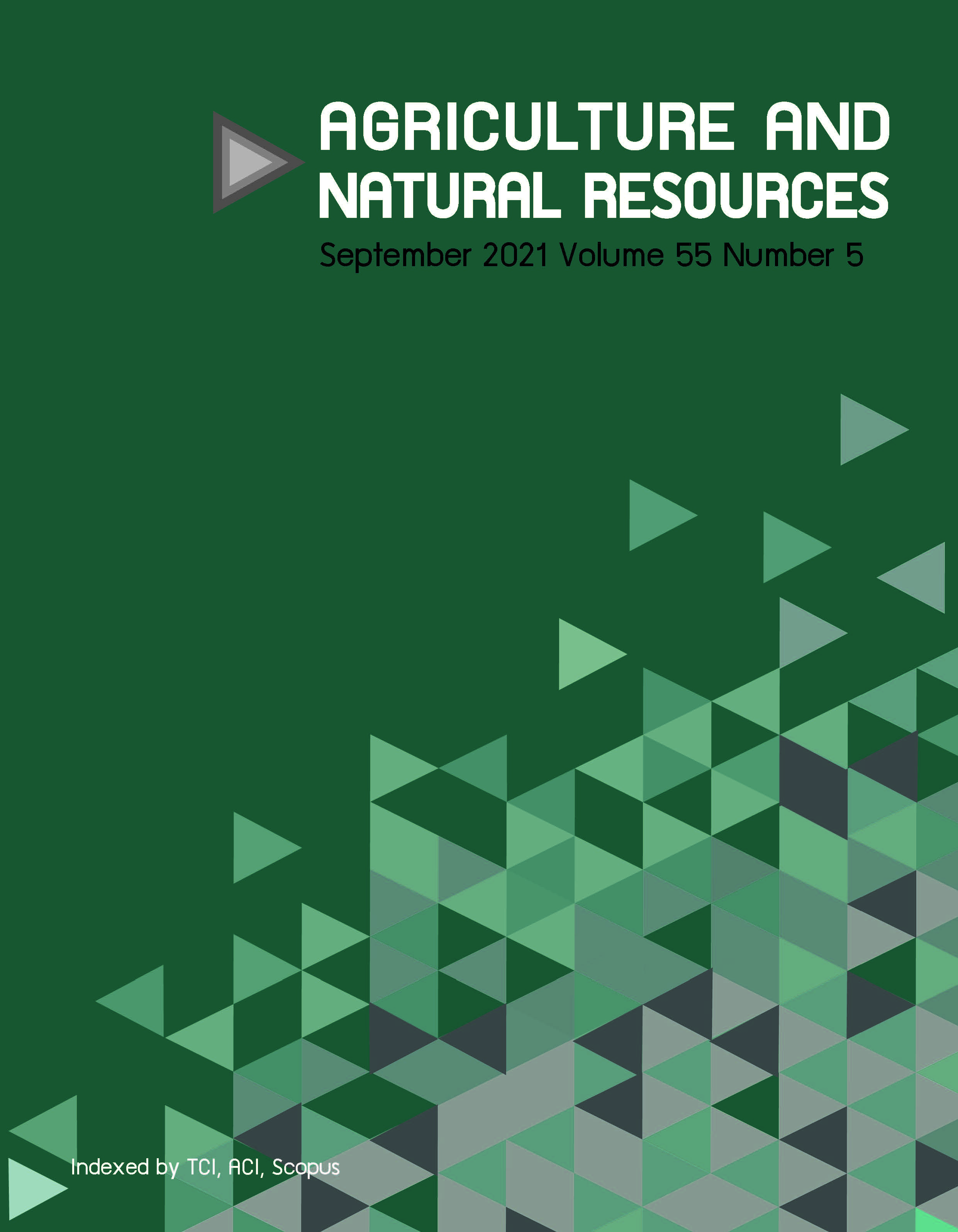Seasonal variation of fruit yield and leaf macronutrient concentrations of Thai aromatic coconut
Keywords:
Cocos nucifera L., Nutrient management, Optimum concentration range, Plant analysisAbstract
Seasonal yield variation is a major obstacle in the export of Thai aromatic coconut. Efficient nutrient management can help alleviate this problem, but it needs a crop-specific nutrient analysis as a guideline. This study established a tentative leaf nutrient concentration standard for this coconut based on a nutrient survey approach. The fruit yield and macronutrient concentrations in the index leaf were monitored monthly and bimonthly, respectively, from Thai aromatic coconut trees in 11 orchards located in the main production area between November 2015 and April 2017. The data showed that the mean (± SD) fruit yield was in the range 135–219 fruit/tree/18 mth (9 ± 1.3 fruit/bunch/month), with a low yield (lower than 8 fruit/bunch) observed in the periods between March and May 2016, November and December 2016 and March and April 2017, corresponding to dry periods in the region. Most leaf macronutrient concentrations were relatively stable throughout the entire study except for phosphorus and calcium. There was a weak correlation (correlation coefficient 0.04–0.38) between the leaf macronutrient status and the varying fruit yield. The mean (± SD) nitrogen concentration was highest (1.73 ± 0.11–1.94 ± 0.15%) followed by potassium (0.81 ± 0.23–1.00 ± 0.21%) and calcium (0.31 ± 0.08–0.90 ± 0.07%). Magnesium, sulfur and phosphorus were present in much lower concentrations (0.19 ± 0.07–0.26 ± 0.05%, 0.13 ± 0.02–0.15 ± 0.02% and 0.09 ± 0.02–0.14 ± 0.04%, respectively). Based on the results, a tentative leaf macronutrient concentration for Thai aromatic coconut was developed that could be used as a reference for farmers in this area to evaluate the health status of their coconut palms.
Downloads
Published
How to Cite
Issue
Section
License
Copyright (c) 2021 Kasetsart University

This work is licensed under a Creative Commons Attribution-NonCommercial-NoDerivatives 4.0 International License.
online 2452-316X print 2468-1458/Copyright © 2022. This is an open access article under the CC BY-NC-ND license (http://creativecommons.org/licenses/by-nc-nd/4.0/),
production and hosting by Kasetsart University of Research and Development Institute on behalf of Kasetsart University.







